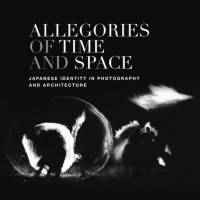In "Allegories of Space and Time," Columbia University Professor Jonathan M. Reynolds charts the discourse surrounding tradition and modernity in Japanese aesthetics from the 1940s to '80s.
Allegories of Time and Space, by Jonathan M. Reynolds
316 pages
University of Hawaii Press, Nonfiction.
Despite the subtitle, "Japanese Identity in Photography and Architecture," and the fact that Reynolds references only a handful of artists, the book deals with diverse media — from sculpture to advertising. It is this wide-ranging approach that bolsters his most convincing arguments.
Reynolds links Hiroshi Hamaya's ethnographic photographs of rural Niigata Prefecture with the "Discover Japan" campaign conceived several decades later by major ad firm Dentsu, showing both suggest that past and present, indigenous and modern are polar opposites. He also makes unlikely allies of sculptor Taro Okamoto and bubble era creative director Eiko Ishioka who draw on Jomon pottery and traditional near-eastern clothing respectively. These artists reach beyond Japan's supposedly sinocentric aesthetic tradition to grasp bolder forms and colors — ones that reject the East-West binary and suggest solidarity with the third world.
Reynolds takes care to avoid reductive arguments, instead comparing works against the backdrop of contemporary social and political developments and allowing the reader to trace the contours of a larger debate.
Whether Japanese aesthetics are a story of unbroken continuity or drastic change, indigenous inspiration or foreign influence is not the question "Allegories of Space and Time" answers, but one that it poses.


















With your current subscription plan you can comment on stories. However, before writing your first comment, please create a display name in the Profile section of your subscriber account page.